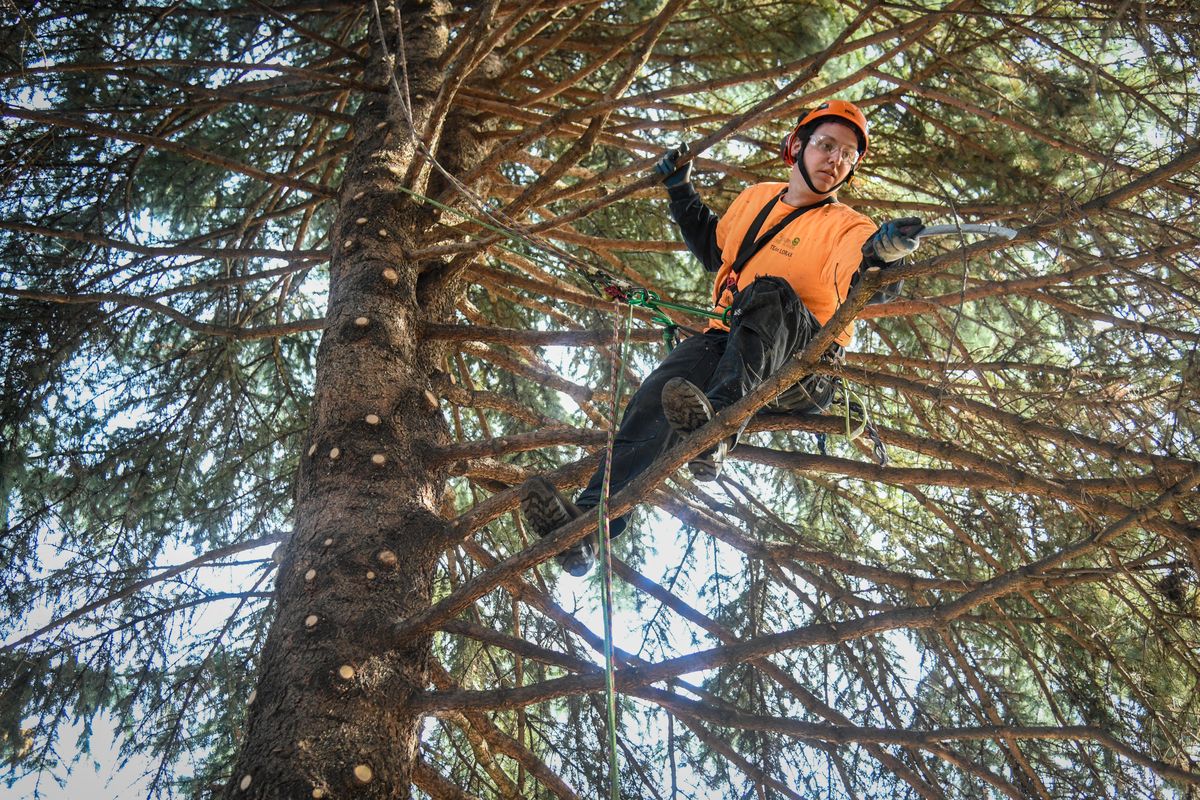City hopes to grow tree canopy to 30 percent by 2030

City leaders hope to grow Spokane’s tree canopy by 30 percent by 2030, focusing on many of the city’s poorest and most sparsely planted neighborhoods.
The city counted more than 89,000 trees in its 2019 count, which creates a canopy that covers about 23 percent of Spokane. There were 97 species counted in the 2013, storing nearly 60,000 tons of carbon dioxide.
Most of those trees are in the city’s oldest neighborhoods, with areas like East Central and Hillyard having fewer trees.
Councilwoman Lori Kinnear said more trees across the entire city not only will increase home values and reduce pollution, it’ll also create a city today’s residents can pass down to the next generation.
“It’s not just for us, it’s for the people that come after us,” she said.
Kerry Brooks, an EWU professor who led a 2016 study on the equitable placement of Spokane’s street trees, said planting more trees is “low-hanging fruit” for cities looking to become more sustainable. He said other methods to filter stormwater, reduce emissions and create clean, green spaces, can be far more expensive. As Spokane becomes even more urban, he said, it’s also more important than ever to purposefully plan green spaces.
Kinnear, who is sponsoring the proposals, said she hopes to set up a way for the city to offer financial incentives, like paying less in stormwater charges, to encourage people to plant more trees. She said the 30 percent tree coverage by 2030, also lines up with the city’s goal of reducing carbon emissions by 2030.
Her legislation, which would be introduced on either Earth Day or Arbor Day, is the first of two steps to clarify street tree rules and gather feedback on what incentives the community would like to receive for planting trees. She said she doesn’t yet have specific proposals, savings or cost worked out yet and will have more details once she meets with the Plan Commission and gathers community feedback.

As the city looks for places to create green spaces, or encourage homeowners and developers to plant, it needs to prioritize neighborhoods who need them the most, Kinnear said.
“We have to be thoughtful about where we’re actually going to be locating trees and that it’s equitable across the city,” she said.
Brooks said the people who live in low-income neighborhoods without trees also may not own vehicles. He said people without cars may take public transportation or walk more, spending more time in an environment without trees offering shade or filtering the air.
He said more green spaces in neighborhoods have financial benefits through filtering stormwater, but studies have also shown more trees improve people’s health and mood, and a lack of trees can make neighborhoods warmer, which can negatively impact people’s health.
He said it’s difficult to pinpoint why some neighborhoods are greener than others, but it could be because many people in lower-income neighborhoods are renters instead of homeowners or may not be able to afford, or maintain, a tree. He said the city’s history of slowly annexing the land around it over the years could also be a possible explanation of the disparity in tree cover across the city.
He said some parts of the city still don’t have sidewalks or street trees because at the time, Spokane, or Spokane County, didn’t require builders to include them.
Kinnear said she also hopes the push to plant more trees will diversify the city’s tree population, more than 18 percent of which are maple trees.
Katie Kosanke, a city urban forester, said Spokane’s tree population could take a hit by a maple-specific pest or disease. She said other communities have lost elms and ash trees due to Dutch elm disease or the emerald ash borer.
The largest groups of maples are in northwest and southeast Spokane.
Norway maples make up more than 16 percent of the population, and ponderosa pine are the second largest group, making up about 13 percent of the tree population. Other tree varieties, such as black llocusts, cherry and Colorado spruce make up between 2 and 4 percent of the tree population.
Kosanke said maples are no longer on the approved tree list, and the city encourages people to plant other trees that aren’t as prevalent, such as oaks, sequoias and elms, as well as ornamental trees.
Kinnear said at the rate the Parks and Recreation Department is planting trees, the city may be on track to meet, or exceed, its goal by 2030. In 2015, the Parks Department planted 879 trees, 711 in 2016, 997 in 2017 and last year it planted 920. The Parks Department has also given away 2,000 trees over the past two years. Kosanke said many developers and homeowners are also planting trees, which the city isn’t always able to count.
Kosanke said the city is trying to create equitable green space through the neighborhood tree program. Before giving away trees, the city usually tries to reach out to underforested neighborhoods to ensure they get first pick, and then opens up the neighborhood tree program to the community. The city gives away 500 trees in the spring and 500 trees in the fall.
Kinnear said she hopes to get to 30 percent or more tree coverage by 2030 through both city and community planting. By September, she hopes to have any land use changes, and tree planting incentives, ready to present to the public.
